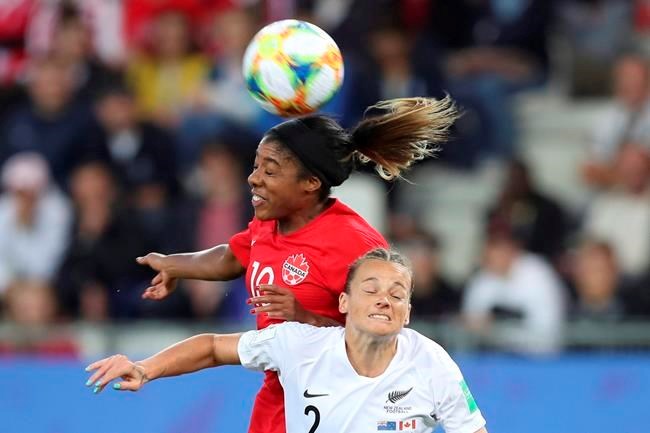TORONTO — Half of elite female soccer players who suffered a head-collision event received medical assessments, compared to a third of male players, according to a Canadian study published on Tuesday in the Journal of the American Medical Association.
Researchers reviewed 52 matches from the 2019 FIFA Women's World Cup and monitored the games for the frequency and medical assessment of head collision events, time stopped for assessment, and visible concussion signs. The data was compared to the 2014 and 2018 Men's World Cups and the 2016 UEFA Euro Cup.
In the matches reviewed, 84 per cent of female athletes and 88 per cent of male athletes showed two or more visible signs of concussion after a head collision event, including clutching of the head or disequilibrium.
The median time that play was stopped for a medical assessment in women's tournaments was 70 seconds compared to about 50 seconds in men's matches. A minimum of 10 minutes is required to perform a concussion assessment.
According to Dr. Michael Cusimano, lead researcher on the study and a neurosurgeon at St. Michael's Hospital in Toronto, the differences in how head collision events are handled between the two genders may lie in the on-field officials.
"In the women's game, all the referees are women. So we think that there's a cultural aspect that might be there. I think that may play a role," said Cusimano. "I think there may be heightened awareness because there's certain heightened reporting of women's concussions.
"So we think those are probably important reasons why it might be slightly higher, but really, neither gender is really getting a passing grade."
Cusimano suggested increasing the role of video assistant referees, employing independent medical assessors, or allowing temporary player substitutions to provide sufficient time for medical assessments.
"I think we need to get some action on this. We've looked at three elite men's tournaments — two World Cups and the European championship — and now the Women's World Cup and we're consistently finding the same things," said Cusimano. "I think we need a culture shift.
"I think it depends also on the people who fund the sport, the sponsors of these high level tournaments should be called upon to take a stand that player health is critically important. We shouldn't just pay lip service because we constantly hear from groups and organizations that player health is of utmost concern."
A March 2019 study on the cause of concussions in soccer by researchers at St. Michael's Hospital found that most head traumas were caused by player-to-player contact.
This report by The Canadian Press was first published Jan. 21, 2020.
___
Follow @jchidleyhill on Twitter
John Chidley-Hill, The Canadian Press



